Cincinnati artist Ted Gantz makes sculptures, fountains and connections
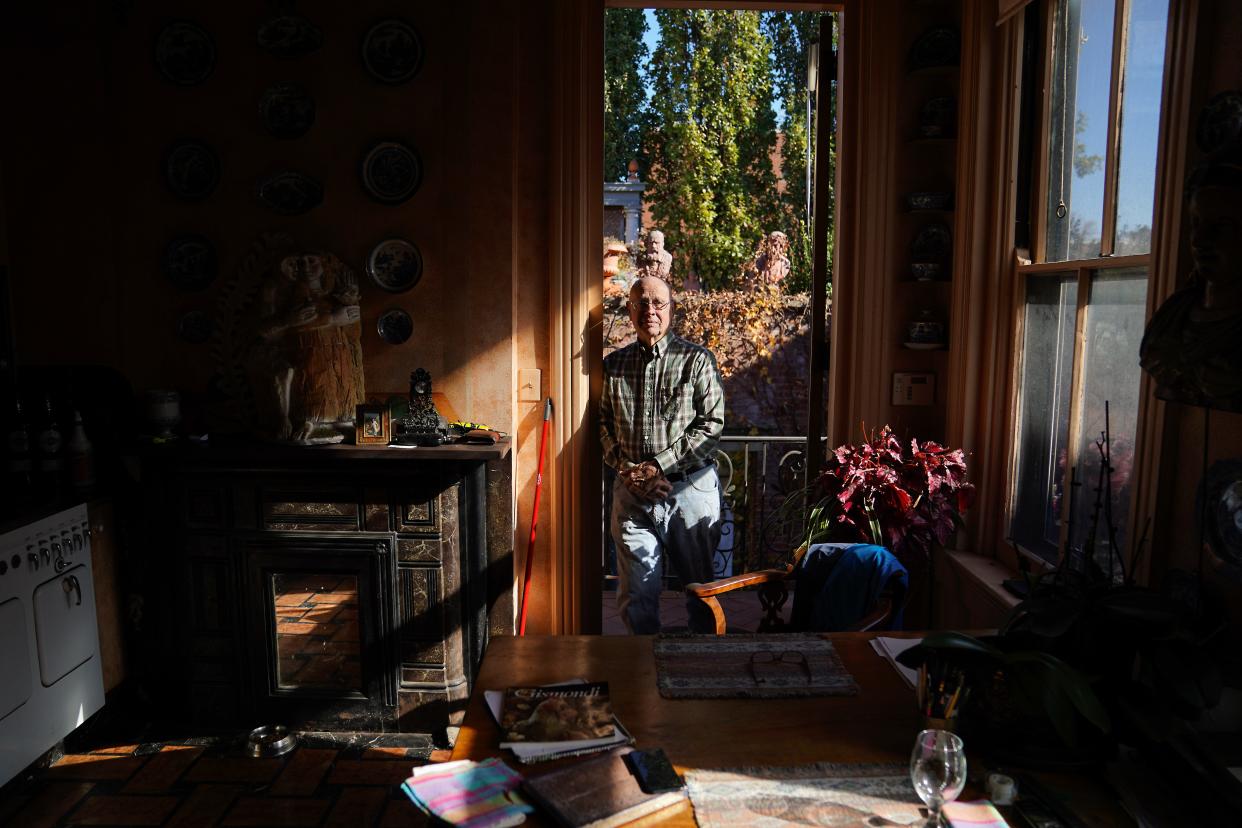
- Oops!Something went wrong.Please try again later.
Update: Ted Gantz's name now appears on the sign near the Eden Park she-wolf. Cincinnati Parks added it after installing the statue replacement and sign to "ensure everything and everyone were properly acknowledged," a Cincinnati Parks spokesperson said. An earlier version of this story said the sign listed him as just a "local sculptor."
Ted Gantz was a young art student when he first got a taste of Italy.
He’d met a man in Florence who liked to talk to foreigners and found a lifelong friend who helped him feed that taste.
Fifty-plus years on, Gantz’s hunger for all things Italian is on full display in his home and sculpture studio in Prospect Hill.
And it explains how Cincinnati was able to bring a replica of its famous she-wolf statue back to Eden Park this fall.
But first, who is Ted Gantz?
Fleischmann heir was early employer
At 79, Gantz is well known in art circles. As a student at the Art Academy of Cincinnati and an employee of the Cincinnati Art Museum library in the 1960s, he met and began working for a member of the famous Fleischmann family.
Charles Fleischmann III, the great-grandson of the co-founder of Cincinnati’s Fleischmann Yeast Co., hired Gantz for work at his Indian Hill estate. Early assignments for the art collector/yeast heir led to work on a large guesthouse on the property.
“He started buying my work very early,” Gantz said.
Gantz supplemented his on-the-job learning from Fleischmann projects with frequent travel to and study in Florence. Even today, he makes near-yearly trips to visit that early friend (and others) and to continue researching Italian art.
He grew especially interested in American sculptors, particularly Hiram Powers. Powers came to Cincinnati as a teen, relocated to Florence in his 30s and spent the rest of his life there creating what would become world-famous sculptures.
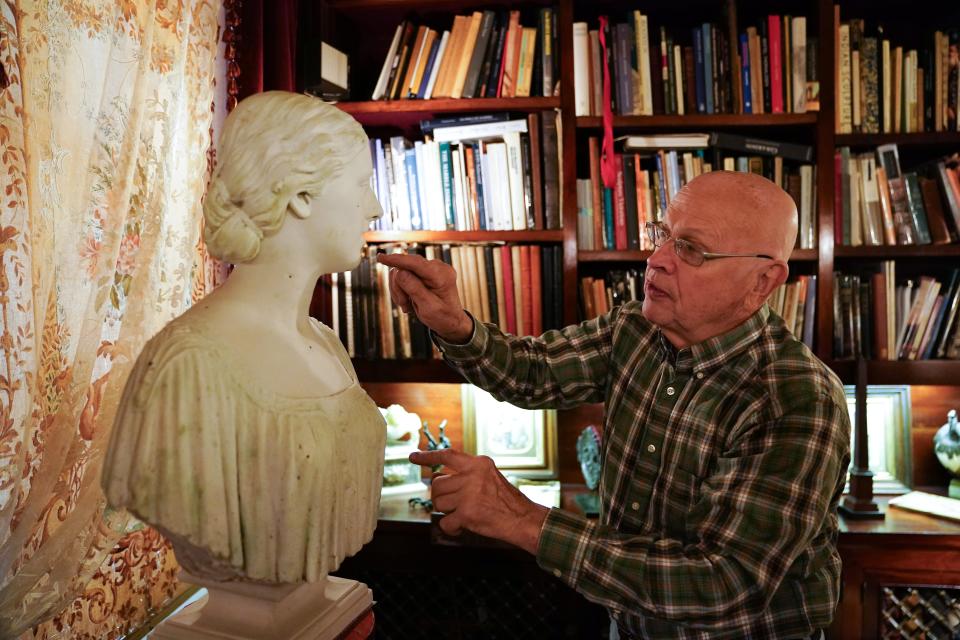
Powers’ work is represented in Gantz’s collection of 70 to 80 pieces of sculpture.
One is the original plaster model of a marble bust of Countess Spencer, an ancestor of Princess Diana. It came from a flea market.
Another is the original plaster version of a bust of founding Miami University President Robert Hamilton Bishop. (Gantz's now-deceased partner, Miami Art Museum founder and famed "Monument Man" Walter Farmer, had nothing to do with that purchase. But the museum did think it owned the original Bishop plaster, until Gantz bought it in auction.)
His home is the work of his hands
The Powers busts share space with dozens of other pieces of art in Gantz’s 1880s-era home at Sycamore and Liberty streets. Every room is filled with the work of his hands. Walls and ceilings feature his intricate plaster scrollwork. Floors are made of wood and tiles he made and laid.
On the third floor, the original laundry room and maid quarters of the home, his bathroom features a tub he carved from marble and his bedroom, a handmade canopied bed. He gardens in a courtyard with a balcony, both decorated with his work and that of other artists.
“I couldn’t see myself immigrating to Italy,” the Cincinnati native said. But by studying Italian art – along with its language and food – he’s created a sense of Italy in his home.
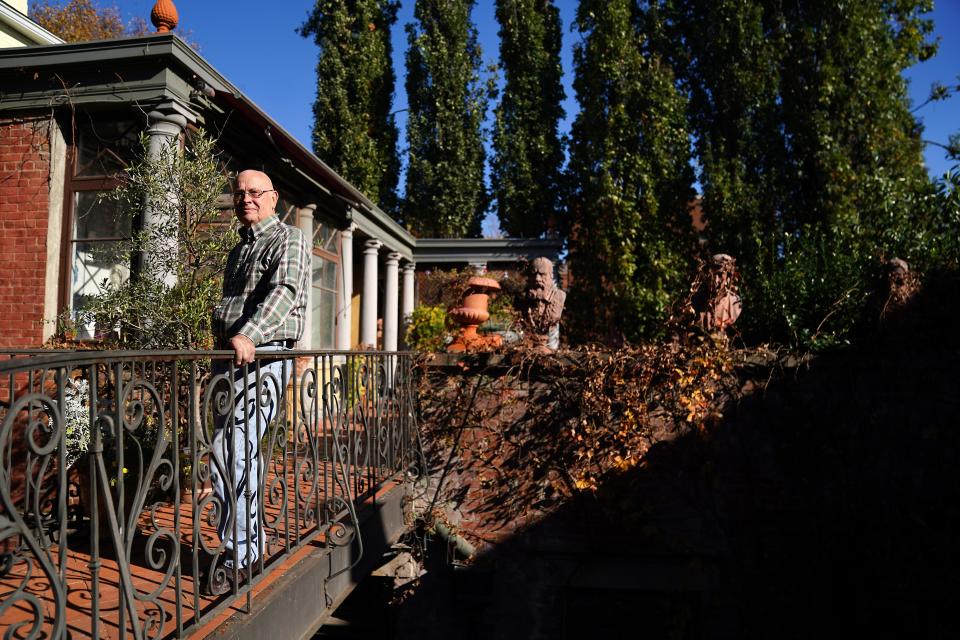
Gantz crafted many of his home’s features at Sycamore Street Studio, which he operates from adjacent space with longtime business partner Robert Dyehouse.
That’s where Gantz and Dyehouse create work for clients, too – furniture, fountains, gates, lighting fixtures, fireplaces and more.
Some of their work is installed in public places:
The Bettman Fountain, named for longtime Cincinnati judge Gil Bettman, sits in Eden Park.
Rockdale Temple in Amberley Village includes an ark they designed.
In Kenwood, Jewish Hospital's courtyard is decorated with one of their fountains.
In Blue Ash, the chapel in Hospice of Cincinnati features one of their decorative screens.
But most of their work is for private buyers. Right now, they are helping restore Alberly Manor, the Indian Hill estate built by grocery magnate William Albers between 1926 and 1928.
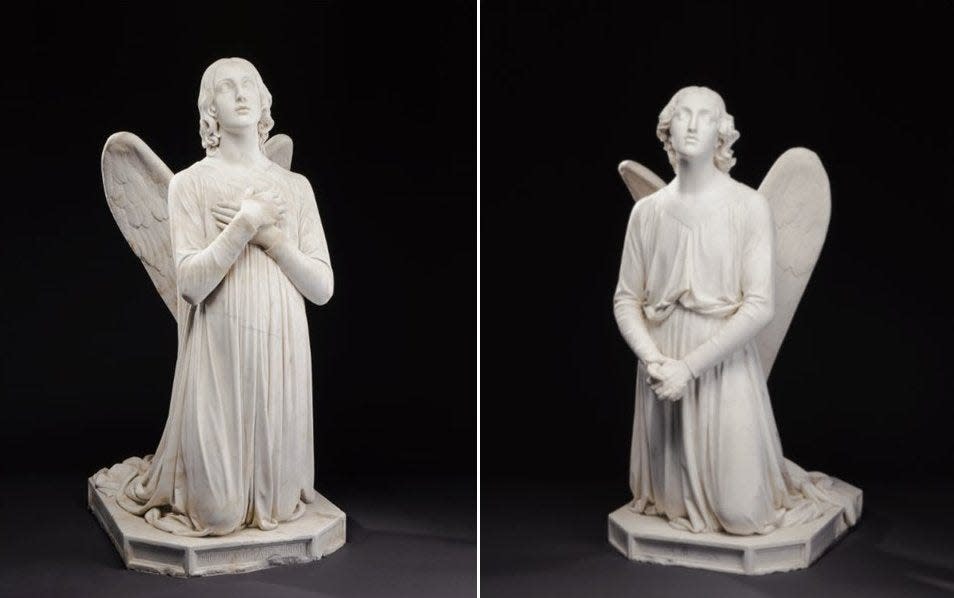
Gantz found marble angel sculptures in a church basement
Gantz is considered an expert in 19th-century American sculptors, especially expatriates in Italy.
"His depth of knowledge is considerable," said Julie Aronson, a Cincinnati Art Museum curator who knows Gantz and his work.
As a museum donor and volunteer in its library, Gantz aims to be helpful, Aronson said. "He's just so interested in this."
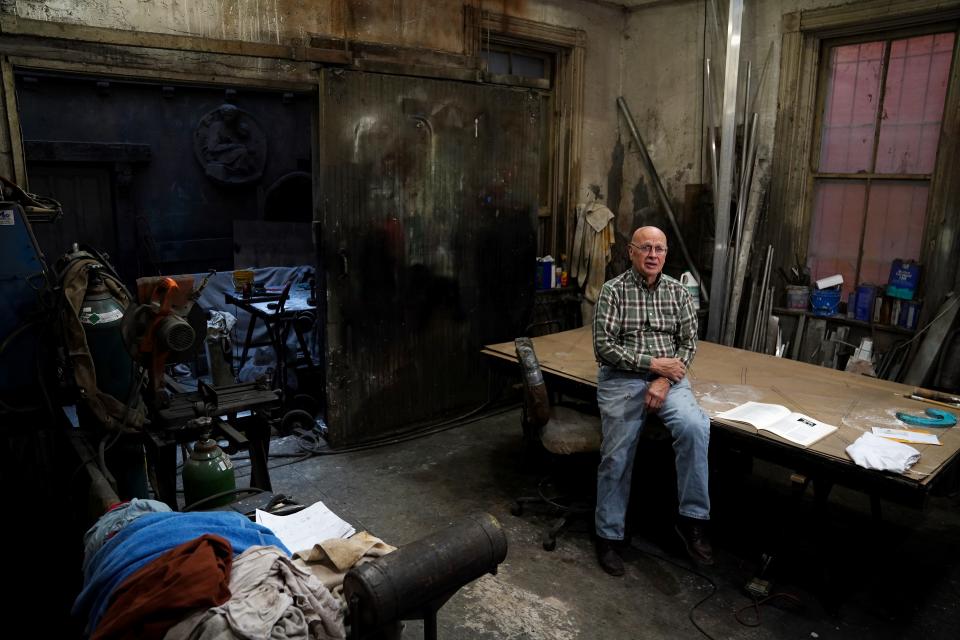
All that paid off for the museum in the late 1990s when Gantz learned two famous marble angel sculptures had been relegated to a local church basement. Florence sculptor Oduardo Fantacchiotti created "Adoring Angel" and "Praying Angel" for the Cathedral Basilica of St. Peter in Chains in the late 1840s. At some point, the life-size statues were moved to St. Teresa of Avila in Price Hill, and then its basement.
"He went looking for them," Aronson said. "He wanted to see them ... and he found them."
Gantz said his research on Powers – who had recommended Fantacchiotti for the Cincinnati commission – led him to the angels. He mentioned their whereabouts during a dinner party with museum friends. By 1998, they'd found a new home with the Cincinnati Art Museum and are now on display in its Cincinnati Wing.
"They have been very popular," Gantz said.
Gantz is 'local sculptor' who helped return she-wolf to Eden Park
Living next to Eden Park, Mike Williams has visited the she-wolf often through the years, sometimes rubbing its nose for luck.
So Williams, owner of Wooden Nickel Antiques in Over-the-Rhine, was devastated to learn it’d been stolen in June 2022.
One of his first calls was to Ted Gantz.
“Ted knows a lot about this,” Williams thought.
He was right. “I knew a place,” Gantz said.
Gantz’s visual memory – one he’s cultivated since a long-ago art teacher told him “What you are here to learn is not to draw but how to see” – told him he’d seen the wolf before.
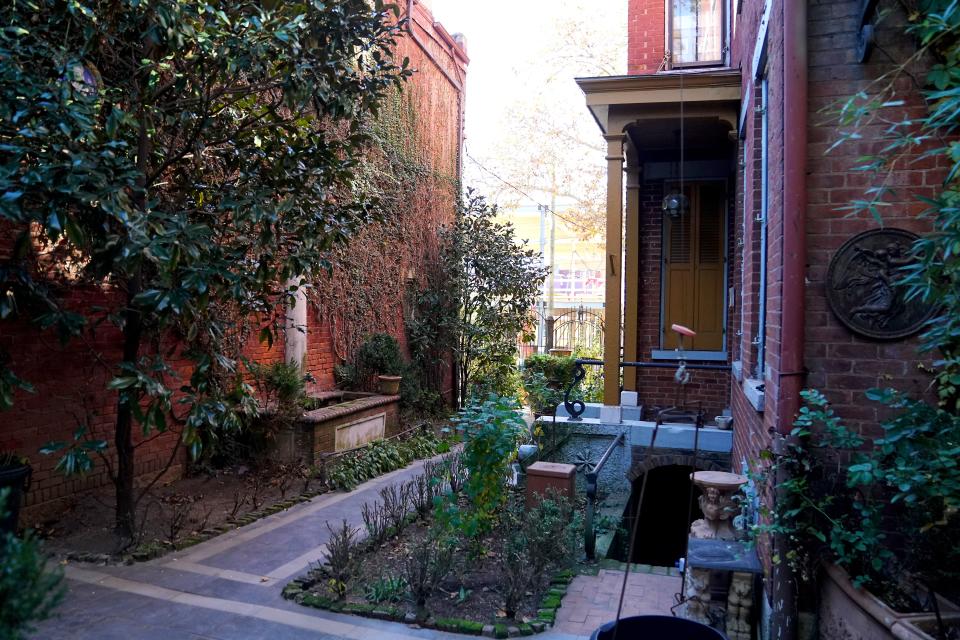
He quickly found it in a catalog on his shelf. There, on page 225, was a photo of what appeared to be a plaster cast of the Lupa Capitolina – the wolf of the Capitoline museums of Rome.
He then visited Eden Park to measure the distance between the paws left behind on the statue’s base.
“We wanted to make sure it wasn’t a scaled-up or a scaled-down version,” he said. “It was a match, dimension-wise.”
With that information, Gantz contacted the owner of the plaster mold and set the process in motion. On Nov. 3, Cincinnati Parks installed a replica of the stolen 1932 statue, the culmination of 16 months of effort by volunteers, donors and park staff.
Gantz saw the work in progress when he visited Florence in October 2022 and he was on hand when the replacement arrived in Cincinnati.
A new sign in Eden Park tells the story of the she-wolf, her theft and her return. "Cincinnati sculptor Ted Gantz" had the connections to make it happen, the sign notes.
Given his overlapping interests – Italy, sculpture and Cincinnati – Gantz is happy to have played a role. "It was exciting to be part of replacing it."
This article originally appeared on Cincinnati Enquirer: Who is Cincinnati artist Ted Gantz?

